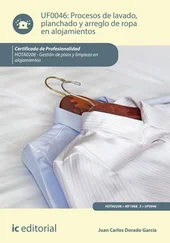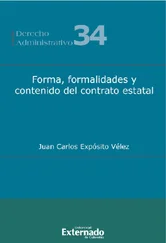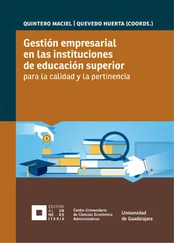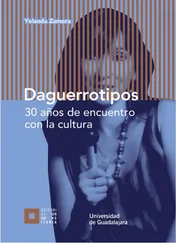Glibert, P. M., y Burford, M. A. (2017). Globally changing nutrient loads and harmful algal blooms: recent advances, new paradigms, and continuing challenges. Oceanography, 30 (1), 58-69.
Gobler, C. J., Doherty, O. M., Hattenrath-Lehmann, T. K., Griffith, A. W., Kang, Y., y Litaker, R. W. (2017). Ocean warming since 1982 has expanded the niche of toxic algal blooms in the North Atlantic and North Pacific oceans. Proceedings of the National Academy of Sciences, 114 (19), 4975-4980.
G ómez-Uchida, D., Sepúlveda, M., Ernst, B., Contador, T. A., Neira, S., y Harrod, C. (2018). Chile’s salmon escape demands action. Science, 361 (6405), 857-858.
Graneli, E., Codd, G. A., Dale, B., Lipiatou, E., Maestrini, S. Y., y Rosenthal, H. (1998). EUROHAB Science Initiative: harmful algal blooms in European marine and brackish waters. European Communities, 93 .
Guala, C., Veloso, K., Farías, A., y Sariego, F. (2021). Caracterización del desarrollo turístico asociado a las áreas silvestres protegidas de la Patagonia chilena. En: J.C., Castilla, J.J., Armesto y M.J., Martínez-Harms (Eds.), Conservación en la Patagonia chilena: evaluación del conocimiento, oportunidades y desafíos , pp. 575-598. Santiago, Chile: Ediciones Universidad Católica de Chile.
Guzmán, L., y Campodónico, I. (1975). Marea roja en la Región de Magallanes. Magallanes, Chile: Instituto de la Patagonia.
Guzmán, L., Pacheco, H., Pizarro, G., y Alarcón, C. (2002). Alexandrium catenella y veneno paralizante de los mariscos en Chile. En: E. Sar, M. Ferrario, y B. Reguera (Eds.). Floracionnes algales nocivas en el cono sur americano , pp. 235-255. Madrid, España: Instituto Español de Oceanografía.
Habit, E., Piedra, P., Ruzzante, D. E., Walde, S. J., Belk, M. C., Cussac, V. E., Gonz ález, J., y Colin, N. (2010). Changes in the distribution of native fishes in response to introduced species and other anthropogenic effects. Global Ecology and Biogeography, 19 (5), 697-710.
Habit, E., Górski, K., Alò. D., Ascencio, E., Astorga, A., Colin, N., Contador, T., de los Ríos, P., Delgado, V., Dorador, C., Fierro, P., García, K., Parra, O., Quezada- Romegialli, C., Ried, B., Rivera, P., Soto-Azat, C., Valdovinos, C., Vera-Escalona, I. y Woelfl, S. (2019). Biodiversidad de ecosistemas de agua dulce. En: Marquet, P.A., Altamirano, A., Arroyo, M. T. K., Fernández, M., Gelcich, S., Górski, K., Habit, E., Lara, A., Maass, A., Pauchard, A., Pliscoff, P., Samaniego, H., Smith-Ramírez, C. (Eds.) (2019). Biodiversidad y cambio climático en Chile: evidencia científica para la toma de decisiones. Informe de la mesa de biodiversidad . Santiago, Chile: Comité Científico COP25; Ministerio de Ciencia, Tecnología, Conocimiento e Innovación. Obtenido de: http://www.minciencia.gob.cl/comitecientifico/
Häder, D. P., Helbling, E. W., Williamson, C. E., y Worrest, R. C. (2011). Effects of UV radiation on aquatic ecosystems and interactions with climate change. Photochemical and Photobiological Sciences, 10 (2), 242-260.
Hallegraeff, G. M. (2010). Ocean climate change, phytoplankton community responses, and harmful algal blooms: a formidable predictive challenge 1. Journal of Phycology, 46 (2), 220-235.
Hannah, L., Roehrdanz, P. R., Marquet, P. A., Enquist, B. J., Midgley, G., Foden, W., Lovett, J. C., Corlett, R. T., Corcoran, D., Butchart, S. H. M., Boyle, B., Feng, X., Maitner, B., Fajardo, J., McGill, B. J., Merow, C., Morueta-Holme, N., Newman, E. A., Park, D. S., Raes, N., y Svenning J. C. (2020). 30% land conservation and climate action reduces tropical extinction risk by more than 50%. Ecography , 43, 943-953.
Heisler, J., Glibert, P. M., Burkholder, J. M., Anderson, D. M., Cochlan, W., Dennison, W. C., Dortch, Q., Gobler, C. J., Heil, C. A., Humphries, E. y Lewitus, A. (2008). Eutrophication and harmful algal blooms: a scientific consensus. Harmful Algae, 8 (1), 3-13.
Hernández, C., Díaz, P. A., Molinet, C., y Seguel, M. (2016). Exceptional climate anomalies and northwards expansion of paralytic shellfish poisoning outbreaks in Southern Chile. Harmful Algae News, 54 , 1-2.
Hidalgo, F. J., Baron, P. J., y Orensanz, J. M. L. (2005). A prediction come true: the green crab invades the Patagonian coast. Biological Invasions, 7 (3), 547-552.
Hidalgo, R., y Zunino, H. (2011). Negocios inmobiliarios en centros turísticos de montaña y nuevos modos de vida. El papel de los migrantes de amenidad existenciales en la comuna de Pucón-Chile. Estudios y Perspectivas en Turismo, 20 (2), 307-326.
Hurtt, G. C., Chini, L. P., Frolking, S., Betts, R. A., Feddema, J., Fischer, G., Fisk, J. P., Hibbard, K., Houghton, R. A., Janetos, A. y Jones, C.D. (2011). Harmonization of land-use scenarios for the period 1500-2100: 600 years of global gridded annual land-use transitions, wood harvest, and resulting secondary lands. Climatic Change, 109 (1-2), 117.
Iglesias, V., y Whitlock, C. (2014). Fire responses to postglacial climate change and human impact in northern Patagonia (41-43 S). Proceedings of the National Academy of Sciences, 111 (51), E5545-E5554.
Instituto Forestal de Chile (2018). Productos forestales no madereros . Boletín N°31 marzo 2018. Obtenido de: https://bibliotecadigital.infor.cl/handle/20.500.12220/27286
Inostroza, L. (2015). El mito de pristinidad y los usos efectivos del territorio de la Región de Magallanes, Patagonia chilena: forestal, minería y acuicultura. Estudios Geográficos, 76 (278), 141-175.
Inostroza, L., Zasada, I., y König, H. J. (2016). Last of the wild revisited: assessing spatial patterns of human impact on landscapes in southern Patagonia, Chile. Regional Environmental Change, 16 (7), 2071-2085.
Intergovernmental Science-Policy Platform on Biodiversity and Ecossytem Services (2018). The IPBES regional assessment report on biodiversity and ecosystem services for the Americas . En: J., Rice, C. S., Seixas, M. E., Zaccagnini, M., Bedoya-Gaitán, y N. Valderrama (Eds.). Secretariat of the Intergovernmental Science-Policy Platform on Biodiversity and Ecosystem Services, 656 p., Bonn, Germany: IPBES. Obtenido de: https://ipbes.net/assessment-reports/americas.
Intergovernmental Panel on Climate Change (2014). Climate change 2014: impacts, adaptation, and vulnerability. Part A: global and sectoral aspects . Contribution of Working Group II to the Fifth Assessment Report of the Intergovernmental Panel on Climate Change. Climate Change 2014: Impacts, Adaptation, and Vulnerability. Obtenido de: https://www.ipcc.ch/report/ar5/syr/.
Iriarte, J. L., González, H. E., y Nahuelhual, L. (2010). Patagonian fjord ecosystems in southern Chile as a highly vulnerable region: problems and needs. Ambio, 39 (7), 463-466.
Jaksic, F. M. (1998). Vertebrate invaders and their ecological impacts in Chile. Biodiversity and Conservation, 7 (11), 1427-1445.
Jackson, G. D., Buxton, N. G., y George, M. J. (2000). Diet of the southern opah Lampris immaculatus on the Patagonian shelf; the significance of the squid Moroteuthis ingens and anthropogenic plastic. Marine Ecology Progress Series, 206 , 261-271.
Kudela, R. M., Berdalet, E., Enevoldsen, H., Pitcher, G., Raine, R., y Urban, E. (2017). GEOHAB: The global ecology and oceanography of harmful algal blooms program motivation, goals, and legacy. Oceanography, 30 (1), 12-21.
Lacy, S. N., Meza, F. J., y Marquet, P. A. (2017). Can environmental impact assessments alone conserve freshwater fish biota? Review of the Chilean experience. Environmental Impact Assessment Review, 63 , 87-94.
Lagos, N. (2003). Paralytic shellfish poisoning phycotoxins: occurrence in South America. Comments on Toxicology, 9 (2), 175-193.
Читать дальше












